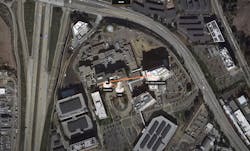Xendee to Assist in Utility Scale Microgrid Design, Networking
As organizations seek new sustainable energy solutions to meet carbon reduction goals, microgrids and distributed energy resources (DERs) have emerged as both a financially viable and resilient alternative to traditional utility services. However, even though onsite energy production offers a wealth of benefits, it also requires a great deal more planning, engineering and maintenance than a simple utility connection.
These microgrid projects are made further difficult by the fact that microgrids must be designed to fit the dimensions of the building, the local weather conditions, and to meet the specific needs of the facility—be it a small house or a massive research laboratory.
To help meet this engineering challenge, particularly in larger projects, Xendee has released a new multi-node feature that enables users to create advanced, interconnected microgrid networks from a constellation of smaller microgrids or DERs that can support up to 25 technology types, including solar PV, battery storage, hydrogen, hydrokinetic and more.
The multi-node feature enables the use of multiple nodes (a bus bar where multiple technologies or loads can be circuited together) and utilizes real-world location data of each point to optimize the final design and investment strategy. This allows for a more realistic model of communities or campuses and allows energy to be generated, used, and transferred in the most efficient manner.
The multi-node feature allows each node to essentially act as its own energy node, with its own connection to the wider energy system and a bus bar to connect to up to 25 different types of renewable and traditional energy generation sources. The nodes can also be connected directly to building loads, for instance, a large industrial motor.
This feature allows Xendee to suggest different functionality methods at particular nodes to help meet high-load portions of the facility. Multi-node can also help users avoid under or oversizing distribution equipment and cut costs by placing energy technologies as close as possible to where it will be consumed.
The feature will benefit several use cases, including modeling microgrids within large facilities, comparing rooftop and cable-fed field installations, and examining energy input and output demands based on geographic locations.
The multi-node interface can also be equipped with an additional feature that layers power flow and voltage considerations within a model. With power flow included, models can calculate the optimal energy outputs and investment while also considering power constraints on cables or other electrical equipment. The multi-node feature also provides reporting based on each node’s dispatch, power flow, voltage, network losses, and a system balance table.
About the Author
T&D World Staff
Content Team
Nikki Chandler
Group Editorial Director, Energy
[email protected]
Jeff Postelwait
Managing Editor
[email protected]
Christina Marsh
Senior Editor
[email protected]
Ryan Baker
Associate Editor
[email protected]
Amy Fischbach
Electric Utility Operations
[email protected]
Rich Maxwell
Community Editor
[email protected]
Gene Wolf
Technical Editor
[email protected]
